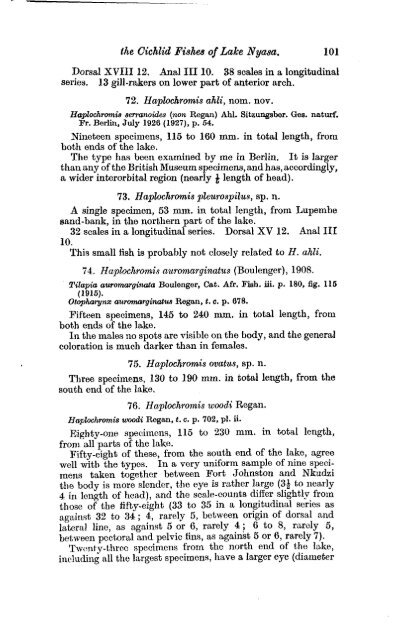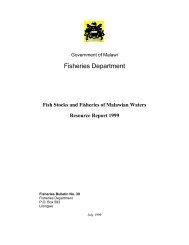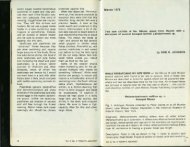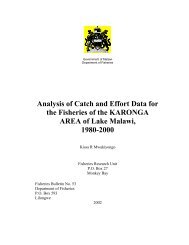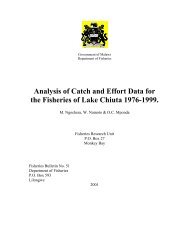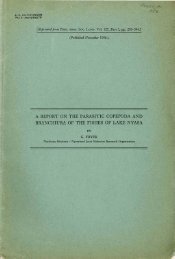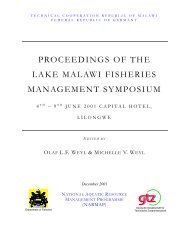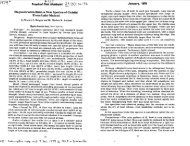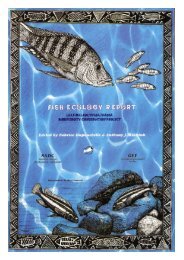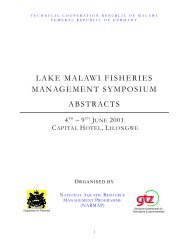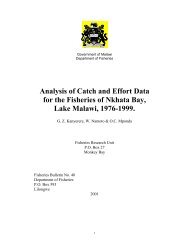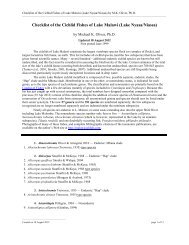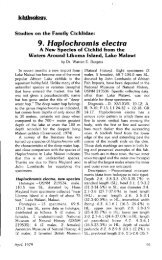Download Trewavas (1935) - The Cichlid Fishes of Lake Malawi ...
Download Trewavas (1935) - The Cichlid Fishes of Lake Malawi ...
Download Trewavas (1935) - The Cichlid Fishes of Lake Malawi ...
- No tags were found...
You also want an ePaper? Increase the reach of your titles
YUMPU automatically turns print PDFs into web optimized ePapers that Google loves.
the <strong>Cichlid</strong> <strong>Fishes</strong> <strong>of</strong> <strong>Lake</strong> Nyasa. 101Dorsal XVIII 12, Anal I11 10. 38 scales in a longitudinalseries. 13 gill-rakers on lower part <strong>of</strong> anterior arch.72. Haplochrmis ahli, nom. nov.Haplochromis serranoides (non Regan) Ahl. Sitzungsber. Ges. naturf.Fr. Berlin, July 1926 (1927), p. 64.Nineteen specimens, 115 to 160 mm. in total length, fromboth ends <strong>of</strong> the lake.<strong>The</strong> type has been examined by me in Berlin. It is largerthan any <strong>of</strong> the British Museum specimens, and has, accordingly,a wider interorbital region (nearly length <strong>of</strong> head).73. Haplochromis pleurospilus, sp. n.A single specimen, 53 mm. in total length, from Lupembesand-bank, in the northern part <strong>of</strong> the lake.32 scales in a longitudinal series. Dorsal XV 12. Anal 11110.This small fish is probably not closely related to H. ahli.74. Haplochronais auromarginatus (Boulenger), 1908.TGapia auromarginata Boulenger, Cat. Afr. Fish. iii. p. 180, fig. 116(1915).Otopharynx aunmzarginatus Regan, t. c. p. 678.Fifteen specimens, 145 to 240 mm. in total length, fromboth ends <strong>of</strong> the lake.In the males no spots are visible on the body, and the generalcoloration is much darker thm in females.75. Haplochromis ovatus, sp. n.Three specimens, 130 to 190 mm. in total length, from thesouth end <strong>of</strong> the lake.76. Haplochromis woo& Regan.Haplochromis woo& Regan, t. c. p. 702, pl. ii.Eighty-one specimens, 115 to 230 mm. in total length,from all parts <strong>of</strong> the lake.Fifty-eight <strong>of</strong> these, from the south end <strong>of</strong> the lake, agreewell with the types. In a very uniform sample <strong>of</strong> nine specimenstaken together between Fort Johnston and Nkudzithe body is more slender, the eye is rather large (34 to nearly4 in length <strong>of</strong> head), and the scale-counts differ slightly fromthose <strong>of</strong> the fifty-eight (33 to 35 in a longitudinal series asagainst 32 to 34 ; 4, rarely 5, between origin <strong>of</strong> dorsal andlateral line, as against 5 or 6, rarely 4 ; 6 to 8, rarely 5,between pcctoral and pelvic fins, as against 5 or 6, rarely 7).Twenty-throe specimens from the north end <strong>of</strong> the lake,including all the largest specimens, have a larger eye (diameter


